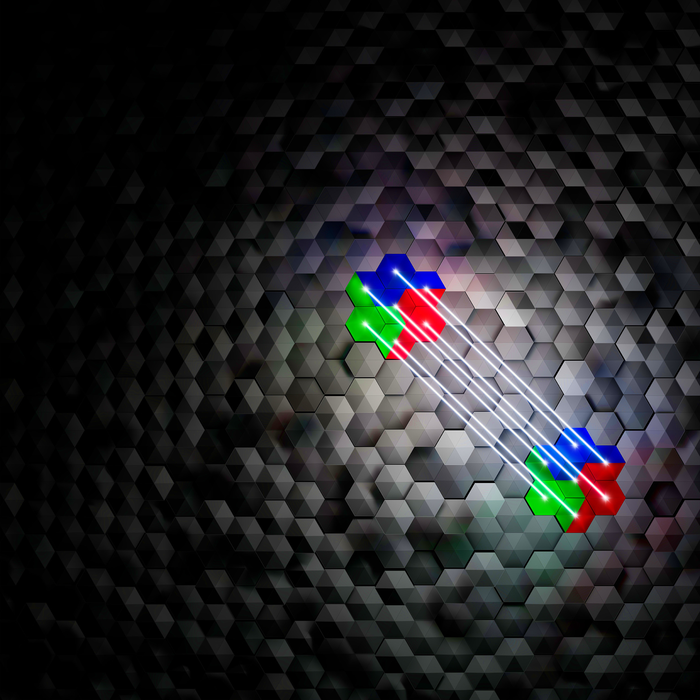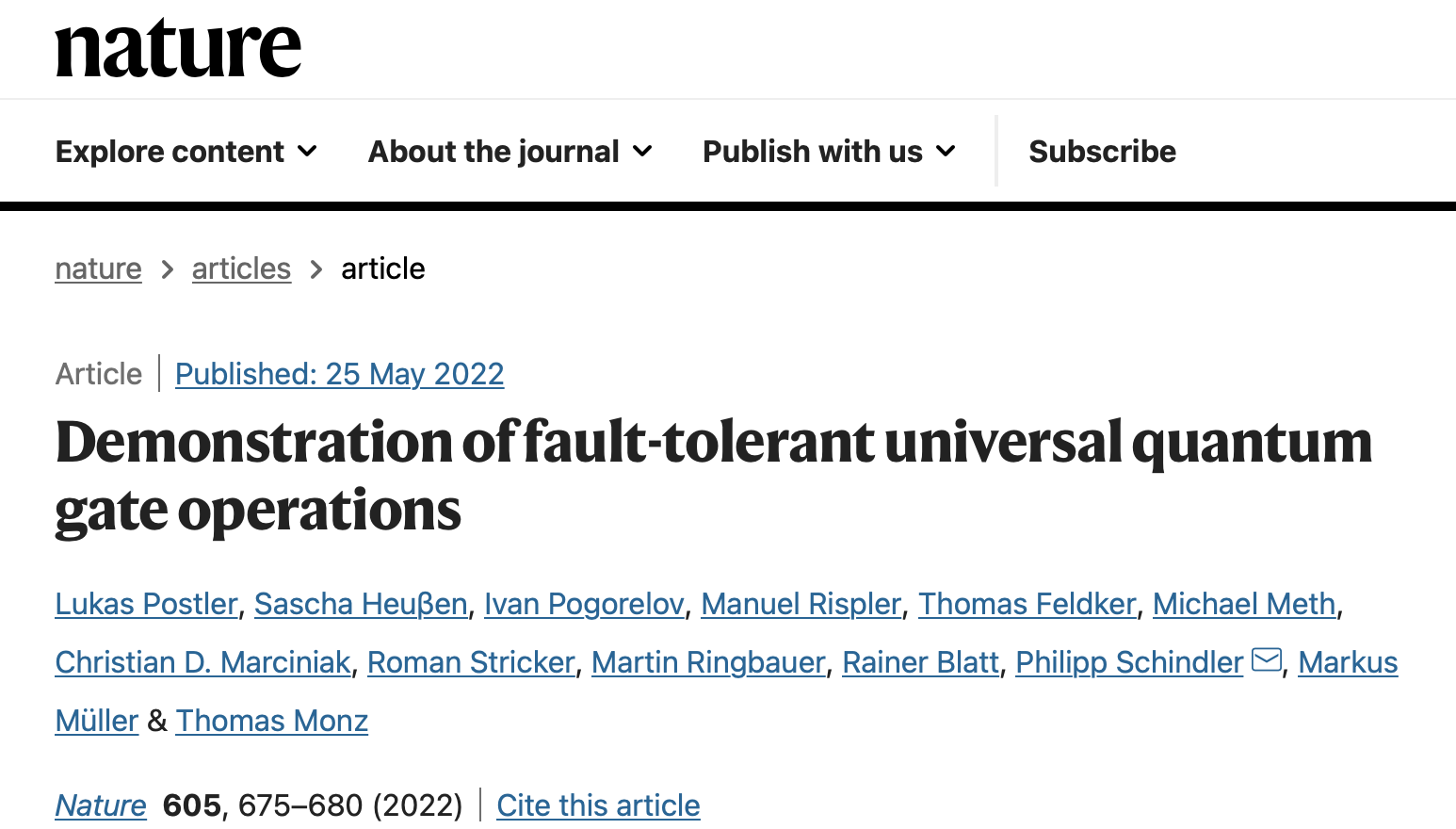
Scientists have demonstrated the basic building blocks needed for fault-tolerant quantum computing, which could enable error-free quantum computing. 
In 1982, scientists such as WK Wootters and WH Zurek proposed the single quantum no-cloning theorem, that is, the process of completely replicating any unknown quantum state in quantum mechanics is unrealizable. Therefore, scientists distribute logical quantum information into entangled states of multiple physical systems (such as multiple single atoms) to achieve information redundancy.
This time, a research team led by Thomas Monz from the Department of Experimental Physics at the University of Innsbruck in Austria and Markus Müller at the Jülich Research Center in Germany and RWTH Aachen University successfully demonstrated for the first time fault tolerance on two logical qubits in an ion trap quantum computer. Universal gate set, related results published in "Nature" (Nature). "For a real-world quantum computer, we need a common set of quantum gates to program all algorithms," says Lukas Postler, an experimental physicist in Innsbruck.
The aforementioned team demonstrated T-gates by preparing a special state in a logic qubit and teleporting it to another qubit through an entanglement gate operation. In encoded logic qubits, the stored quantum information is protected from error. But such qubits are useless without computational operations, and the operations themselves are prone to error. The researchers therefore operated on logic qubits so that errors caused by underlying physical operations could be detected and corrected, and achieved the first fault-tolerant demonstration of a universal gate set on encoded logic qubits.
The researchers verified their experimental results through numerical simulations on classical computers, and are working to implement the aforementioned methods on larger-scale and more practical quantum computers. The team said the method they demonstrated on the ion trap quantum computer could also be used for other quantum computer architectures.

Gate operations on logic qubits can suppress errors through quantum error correction. Artist's rendering of this image via JOHANNES KNÜNZ
Compared with existing classical computers, quantum computers are inherently more susceptible to interference, so quantum computing cannot do without error correction. Otherwise errors will travel uncontrollably in the system, eventually resulting in loss of information.In 1982, scientists such as WK Wootters and WH Zurek proposed the single quantum no-cloning theorem, that is, the process of completely replicating any unknown quantum state in quantum mechanics is unrealizable. Therefore, scientists distribute logical quantum information into entangled states of multiple physical systems (such as multiple single atoms) to achieve information redundancy.
This time, a research team led by Thomas Monz from the Department of Experimental Physics at the University of Innsbruck in Austria and Markus Müller at the Jülich Research Center in Germany and RWTH Aachen University successfully demonstrated for the first time fault tolerance on two logical qubits in an ion trap quantum computer. Universal gate set, related results published in "Nature" (Nature). "For a real-world quantum computer, we need a common set of quantum gates to program all algorithms," says Lukas Postler, an experimental physicist in Innsbruck.

Image via "Nature"
The aforementioned team implemented a universal set of quantum gates on an ion trap quantum computer consisting of 16 trapped atoms. Quantum information is stored in two logical qubits, each spread over seven atoms. This is the first potential realization of two computational gates on a fault-tolerant qubit, which is necessary for a universal gate set. Because in fault-tolerant qubits, it is difficult to realize computational operations based on two qubits (a CNOT gate, i.e., a quantum controlled NOT gate) and a logical T-gate.The aforementioned team demonstrated T-gates by preparing a special state in a logic qubit and teleporting it to another qubit through an entanglement gate operation. In encoded logic qubits, the stored quantum information is protected from error. But such qubits are useless without computational operations, and the operations themselves are prone to error. The researchers therefore operated on logic qubits so that errors caused by underlying physical operations could be detected and corrected, and achieved the first fault-tolerant demonstration of a universal gate set on encoded logic qubits.
The researchers verified their experimental results through numerical simulations on classical computers, and are working to implement the aforementioned methods on larger-scale and more practical quantum computers. The team said the method they demonstrated on the ion trap quantum computer could also be used for other quantum computer architectures.
Related Posts
0 Comments
Write A Comments